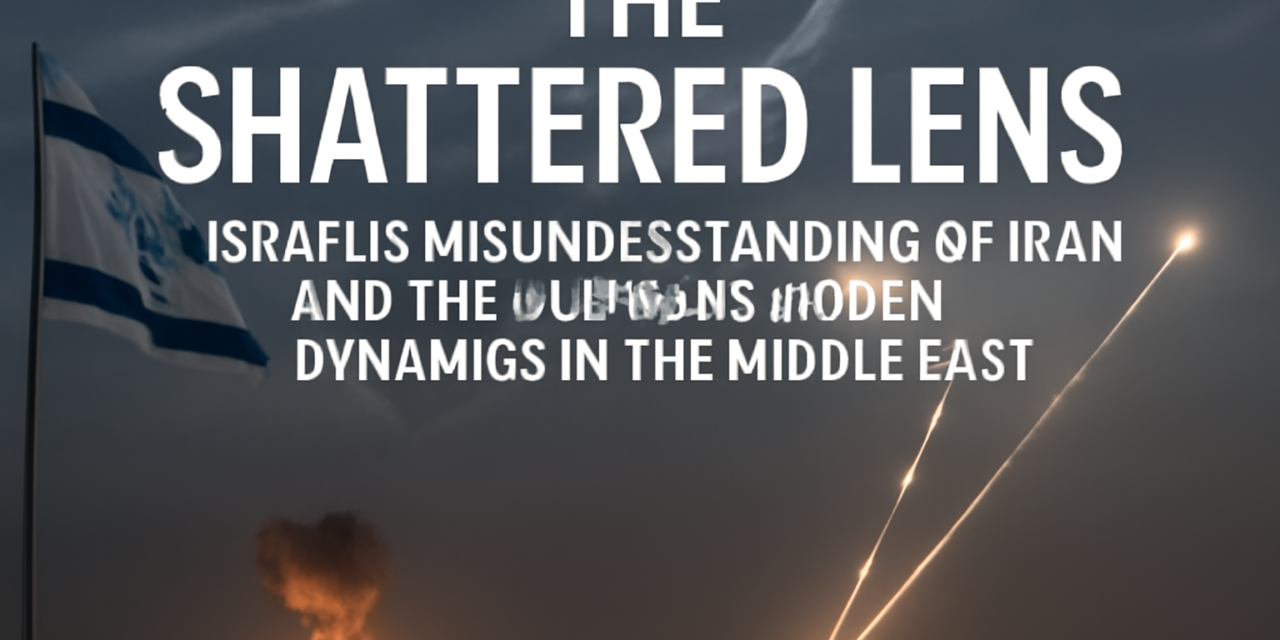Fazal Khaliq
This essay examines how Israel’s long-standing approach to Iran—marked by a significant misunderstanding of Iran’s growing military strength and willingness to confront Israel directly—led to the shocking missile and drone strike by Iran on April 13-14, 2024. This unprecedented attack, which bypassed Israel’s defenses and caused significant damage, marks a pivotal moment in regional geopolitics. It shows not just a tactical shift but a strategic turning point that threatens Israel’s previously unchallenged dominance in the Middle East, as reflected in global reactions from leaders and analysts.
- Introduction: The Israel-Iran Power Imbalance
For decades, Israel’s security was built on its military superiority, technological edge (especially missile defense systems), and covert intelligence operations. Israel viewed Iran mainly as a source of asymmetric threats through proxies like Hezbollah and Hamas, assuming Iran’s direct military retaliation would be ineffective. The idea that Iran could launch large-scale missile attacks on Israeli soil was dismissed as too risky and technologically unfeasible. This misunderstanding, however, would prove catastrophic.
- The Catalyst: Miscalculation at the Damascus Consulate
On April 1, 2024, Israel launched an airstrike on the Iranian consulate in Damascus, killing high-ranking members of Iran’s Revolutionary Guard. Israel assumed Iran would retaliate indirectly, using its proxies as it had in the past. The strike also reinforced Israel’s sense of invulnerability, with its defense systems seen as impenetrable. But Iran’s response would defy these expectations, revealing a deep misjudgment on Israel’s part regarding Iran’s resolve and capabilities.
- Iran’s Bold Move: Operation “True Promise”
On April 13, Iran launched “Operation True Promise,” a massive missile and drone attack aimed directly at Israel. The operation involved over 300 projectiles—ballistic missiles, cruise missiles, and loitering drones—launched from Iran, Iraq, and possibly Yemen. The scale of the attack and its sophisticated execution demonstrated Iran’s advanced capabilities and willingness to challenge Israel head-on.
- Saturation Strategy: Iran used cheaper drones to overwhelm Israel’s air defenses, depleting interceptor stocks and revealing vulnerabilities.
- Simultaneous Attack: Missiles, drones, and cruise missiles were launched in a coordinated strike from multiple directions, overwhelming Israel’s command and control systems.
Despite Israel’s defense systems intercepting a majority of the projectiles, several missiles broke through, striking key military infrastructure, including Nevatim Airbase, which housed F-35 jets. This was the first significant damage to Israeli soil from Iran, shattering the illusion of Israeli invincibility.
- Global Recognition of the Shift
The attack immediately sparked global recognition of a major strategic shift:
- Think Tanks: Analysts like those from the IISS and CSIS acknowledged that the attack exposed a critical weakness in Israel’s defenses and challenged the regional balance of power.
- Global Leaders: Statements from figures like President Biden and Foreign Minister Baerbock pointed to a shift in the international community’s perception of Israel’s security, highlighting Iran’s newfound ability to directly target Israeli assets.
- Implications: The Erosion of Israeli Influence
The successful attack undermined key pillars of Israeli influence:
- Deterrence: Israel’s image of invincibility was significantly damaged. Adversaries now perceive Israel as vulnerable, and allies, especially in the Gulf, are rethinking their reliance on Israel for security.
- Diplomatic Strain: The attack stalled Israel’s normalization efforts with Saudi Arabia, with Riyadh now demanding more concrete actions on Palestinian statehood and stronger security guarantees from the U.S.
- Proxy Dynamics: Groups like Hezbollah have gained significant morale, emboldened by Iran’s direct confrontation with Israel. This could lead to more regional instability and direct threats to Israel.
- Conclusion: A New Regional Order
The April 2024 Iranian missile attack marked more than just a tactical failure for Israel—it was a wake-up call. Israel misjudged Iran’s military capabilities and resolve, and the attack has exposed significant vulnerabilities in Israel’s security framework. The consequences of this event will reshape the Middle East’s political and military dynamics, with Israel’s regional influence facing significant erosion. This moment signals the emergence of a more multipolar and unstable Middle East, where Iran has proven itself a formidable regional power, capable of directly challenging Israel’s long-standing dominance.
References:
- International Institute for Strategic Studies (IISS). (2024). Military Balance 2024 & Associated Commentary on Iran-Israel.
- Jones, S. G. (2024, April). The Iranian Missile and Drone Attack on Israel. Center for Strategic and International Studies (CSIS).
- Barnes-Dacey, J. (2024, April). After Iran’s Attack, Israel’s Choices Could Change the Middle East. European Council on Foreign Relations (ECFR).
- International Crisis Group. (2024, April). Stopping a Full-Blown Israel-Iran War. Crisis Group Briefing.
- The White House. (2024, April). Remarks by President Biden on Iran’s Attack Against Israel.
- German Federal Foreign Office. (2024, April). Statement by Foreign Minister Baerbock on the situation in the Middle East.
- Financial Times. (2024, April). Saudi Arabia urges restraint after Iran’s attack on Israel.
- The Wall Street Journal. (2024, April). Saudi Arabia Seeks to Avoid Escalation After Iran’s Attack on Israel.
- United Nations. (2024, April). Secretary-General’s remarks to the Security Council – on the Middle East.
- Fabian, E. (2024, April 19). IDF reveals footage of damage caused by Iranian ballistic missile. The Times of Israel.
- Bergman, R., & Fassihi, F. (2024, April 14). Iran’s Attack on Israel Opens a Dangerous New Chapter for Old Enemies. The New York Times.
- Carnegie Endowment for International Peace. (Various analyst commentaries, April-May 2024).





